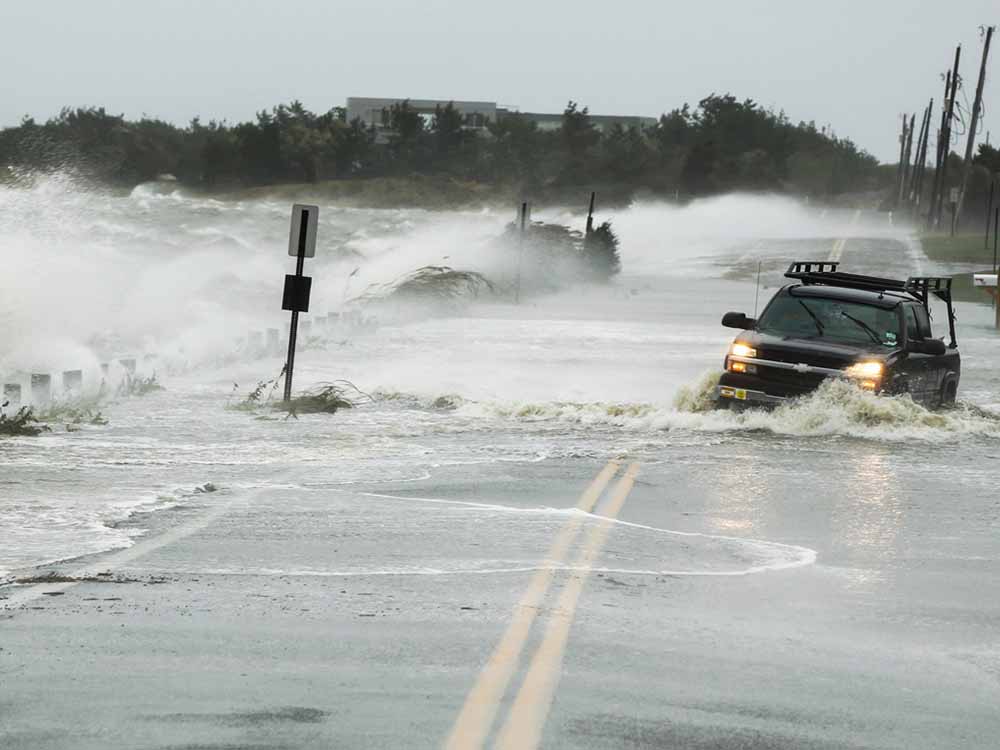Hurricane Sandy (2012) – The Superstorm that Shook the Eastern Seaboard
In late October 2012, Hurricane Sandy, also known as Superstorm Sandy, unleashed its fury on the eastern seaboard of the United States. This comprehensive overview delves into the origins and development of Hurricane Sandy, its devastating impact on the affected regions, the heroic response efforts, and the lasting lessons learned from this unprecedented natural disaster.
The Birth of Hurricane Sandy
Hurricane Sandy began as a tropical wave off the coast of West Africa in late October 2012. As it moved across the Atlantic Ocean, it gradually intensified, earning the classification of a Category 2 hurricane. However, what made Sandy particularly menacing was its convergence with a winter storm system, resulting in a hybrid storm often referred to as “Superstorm Sandy.”
Devastating Impact and Widespread Destruction
Hurricane Sandy made landfall on October 29, 2012, near Brigantine, New Jersey. Its impact was felt across a vast stretch of the northeastern United States, with New Jersey, New York, and Connecticut being among the hardest-hit states. Key points of impact included:
- New York City: Lower Manhattan experienced extensive flooding, leading to the closure of the New York Stock Exchange and public transportation.
- New Jersey: Coastal communities suffered from severe storm surges and widespread power outages.
- Connecticut: Coastal areas and towns along Long Island Sound faced significant damage and flooding.
- Economic Consequences: Sandy’s estimated economic cost was immense, with damage estimates surpassing $70 billion.
Heroic Response and Recovery Efforts
The response to Hurricane Sandy showcased the resilience and solidarity of the affected communities and the tireless efforts of first responders and volunteers:
- First Responders: Firefighters, police officers, and emergency medical personnel worked around the clock to rescue individuals trapped by floodwaters and coordinate evacuations.
- Volunteer Efforts: Communities came together to provide aid to their neighbors, exemplifying the spirit of unity during times of crisis.
- Federal Assistance: The federal government declared a state of emergency, mobilizing resources and financial aid to support recovery and rebuilding efforts.
- Utility Restoration: Utility companies faced an arduous task of restoring power to millions of residents affected by the storm.
Lessons Learned and Resilience
Hurricane Sandy served as a stark reminder of the vulnerabilities of coastal communities in the face of climate change and extreme weather events. Key takeaways from the superstorm included:
- Climate Change Awareness: Sandy underscored the importance of acknowledging the role of climate change in the increased frequency and intensity of such storms.
- Improved Infrastructure: The storm prompted discussions about upgrading infrastructure, including flood defenses, to mitigate future damage.
- Community Preparedness: Local governments and communities increased their focus on disaster preparedness and response.
- Environmental Conservation: The superstorm highlighted the importance of preserving natural barriers, such as dunes and wetlands, to protect coastal regions.
In conclusion, Hurricane Sandy in 2012 was a transformative event, leaving a profound impact on the eastern seaboard and reshaping the way communities approach disaster preparedness and recovery. Its lessons continue to resonate, emphasizing the importance of resilience, unity, and a heightened awareness of the changing climate.











